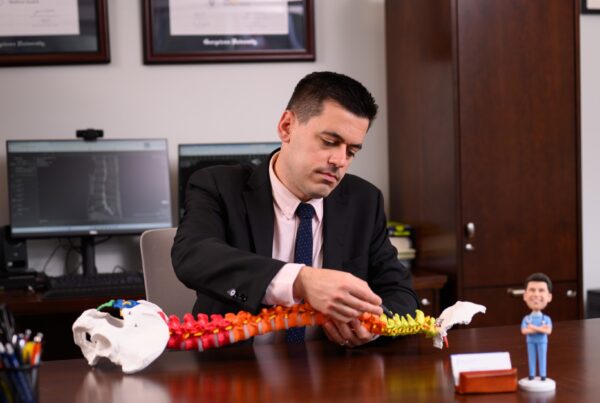Spinal stenosis affects millions of people worldwide, causing the spinal canal to narrow and compress vital nerves. Understanding the stages of spinal stenosis helps patients recognize symptoms early and seek appropriate treatment before the condition progresses to more severe phases.
Spinal Stenosis 101: What’s Really Happening in Your Spine?
Spinal stenosis occurs when the spaces within your spine narrow, putting pressure on the nerves that travel through the spine. This narrowing can happen in any part of your spine, but it most commonly affects the cervical (neck) and lumbar (lower back) regions.
The condition typically develops gradually over time, progressing through distinct stages that range from mild discomfort to severe neurological complications. Recognizing these stages of spinal stenosis allows for timely intervention and better outcomes.
The Road Map: 4 Stages Every Patient Should Know
Medical professionals typically classify spinal stenosis into four progressive stages, each with distinct characteristics and symptoms:
Stage 1: The Silent Creeper (Mild Stenosis)
Stage 1 spinal stenosis represents the beginning of spinal canal narrowing. During this phase:
- Symptoms: Minimal or no symptoms may be present
- Canal narrowing: Less than 25% reduction in canal diameter
- Daily activities: Generally unaffected
- Treatment focus: Conservative management and lifestyle modifications
Many people in stage 1 stenosis remain unaware of their condition, as symptoms may only appear during certain activities or positions.
Stage 2: The Wake-Up Call (Moderate Stenosis)
Stage 2 spinal stenosis involves more noticeable canal narrowing and symptom development:
- Symptoms: Intermittent pain, stiffness, and occasional numbness
- Canal narrowing: 25-50% reduction in canal diameter
- Daily activities: Some limitations during prolonged activities
- Treatment approach: Physical therapy, medications, and activity modification
Patients typically begin experiencing symptoms that interfere with their daily routines during this stage.
Stage 3: The Tipping Point (Severe Stenosis)
Stage 3 stenosis represents a significant progression in the condition:
- Symptoms: Persistent pain, numbness, weakness, and walking difficulties
- Canal narrowing: 50-75% reduction in canal diameter
- Daily activities: Significantly impacted mobility and function
- Treatment considerations: May require more aggressive interventions
Stage 3 spinal stenosis often prompts patients to seek medical attention due to the impact on their quality of life.
Stage 4: The Crisis Point (Critical/End Stage Stenosis)
Stage 4 represents the final stages of spinal stenosis progression:
- Symptoms: Severe neurological deficits, potential paralysis, and loss of bladder/bowel control
- Canal narrowing: Greater than 75% reduction in canal diameter
- Daily activities: Severely compromised independence
- Treatment urgency: Often requires surgical intervention
The collapsing stage of spinal stenosis can lead to permanent neurological damage if left untreated.
It's time to get back
to doing what you love.
Lower Back Blues: How Lumbar Stenosis Develops
The stages of lumbar spinal stenosis primarily affect the lower back and legs:
The First Warning Signs
- Lower back discomfort after prolonged standing
- Mild leg cramping during walking
When Walking Becomes a Challenge
- Neurogenic claudication (leg pain that occurs with standing and walking and improves with sitting)
- Significant walking limitations
- Weakness in leg muscles
The progression through lumbar stenosis stages often follows a predictable pattern, with walking distance becoming increasingly limited as the condition advances.
The Point of No Return: Understanding Final Stages
The final stages of spinal stenosis represent the most severe form of the condition. During end-stage spinal stenosis, patients may experience:
When Your Body Sounds the Alarm
- Permanent nerve damage
- Loss of sensation in affected areas
- Severe muscle weakness or paralysis
Life Gets Complicated
- Inability to walk significant distances
- Loss of independence in daily activities
- Potential need for assistive devices
Your Treatment Toolkit: Options for Every Stage
Treatment approaches vary significantly based on the stage of stenosis:
The Gentle Approach (Stages 1-2)
- Physical therapy and exercise
- Anti-inflammatory medications
- Lifestyle modifications
- Posture improvement techniques
Stepping Up the Game (Stage 2-3)
- Epidural steroid injections
- Specialized physical therapy programs
- Pain management techniques
- Activity modification strategies
The Heavy Artillery (Stage 3-4)
- Surgical decompression procedures
- Spinal fusion when necessary
- Minimally invasive surgical options
- Comprehensive rehabilitation programs
Red Alert: When to Stop Waiting and Start Acting
Understanding what stage is severe spinal stenosis helps determine when to seek immediate medical attention. Contact a healthcare provider promptly if you experience:
- Progressive weakness in arms or legs
- Loss of coordination or balance
- Changes in bladder or bowel function
- Severe pain that interferes with daily activities
- Numbness that doesn’t improve with rest
Early intervention can prevent progression to the final stages of spinal stenosis and preserve neurological function.
Your Journey Forward: Living Smart with Spinal Stenosis
While the stages of spinal canal stenosis can seem concerning, many patients successfully manage their condition with appropriate care. The key factors for successful management include:
- Early recognition of symptoms
- Timely medical evaluation
- Adherence to treatment recommendations
- Regular monitoring of progression
- Lifestyle modifications to support spinal health
Your Spine, Your Choice: Taking Control of What Comes Next
Understanding the levels of spinal stenosis empowers patients to recognize symptoms early and seek appropriate care. From stage 1 through stage 4 of spinal stenosis, each phase requires different approaches to treatment and management.
If you’re experiencing symptoms that suggest spinal stenosis progression, don’t wait for the condition to advance to severe stages. Early intervention offers the best opportunity for maintaining function and preventing permanent neurological complications.
The stages of stenosis provide a roadmap for both patients and healthcare providers to understand disease progression and make informed treatment decisions. With proper care and timely intervention, many people with spinal stenosis can maintain their quality of life and avoid progression to the final stages of this condition.

About Ridgewood
Our team of board certified physicians, located in Ridgewood, New Jersey, are dedicated to bringing you the latest developments and treatment options for spinal surgery. We strive to produce the most clarified & clear content to help you make informed decisions on your medical journey. The road to feeling like your true self should not feel lonely- Let us help you. Please call us to schedule a consultation and speak to one of our team members.






